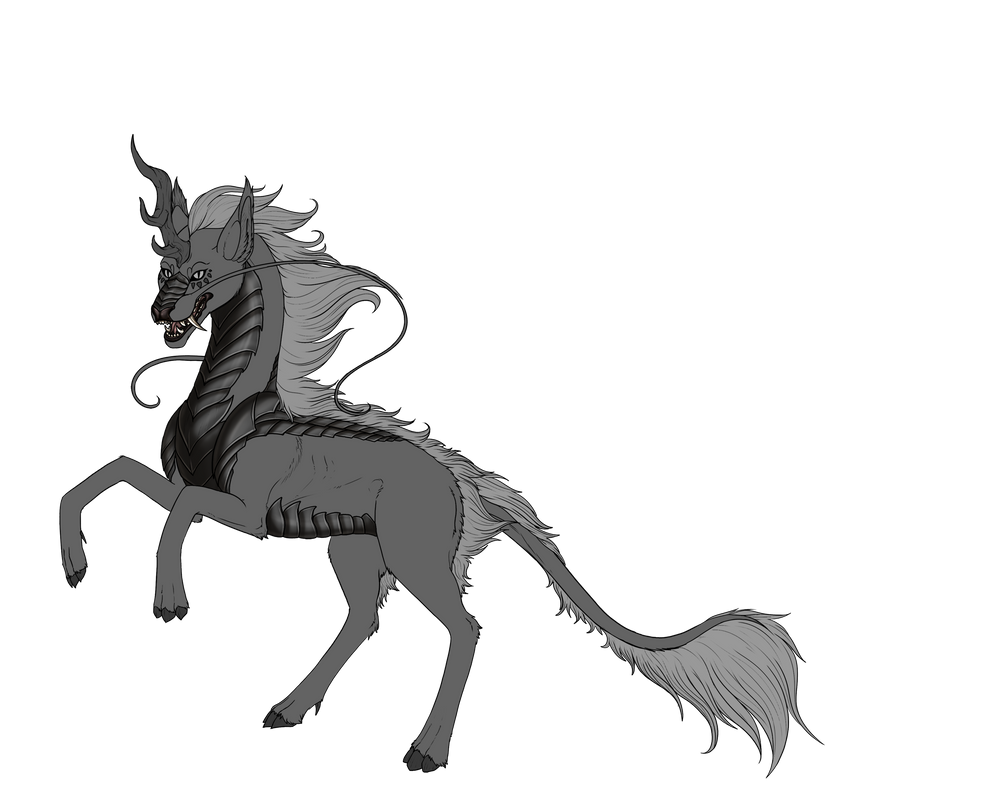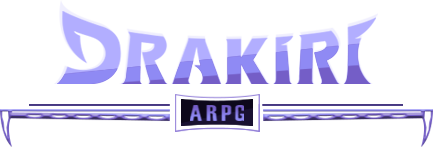subtypes
Kainu (Drakiri subtype)
The most common type of Drakiri, the Kainu are adaptable and numerous. They exist all around Galabastarin, found in every land biome. The Kainu is what you would call the default Drakiri, but they are actually relitavely new in the evolutionary sense. They are a jack of all trades sort of Drakiri, as compared to the other variants that are more specialized.
Kainu are omnivorous, able to thrive on plant matter and meat alike, though do need a little meat in their diet. They are industrious and very adaptable, able to think through any problems they come across, and known to be smart. Their mentality is closest to humans; not as physically strong, without as much in the way of natural weapons or raw magical power but they are able to find other ways around problems. As such, they are smaller than their ancestors. They are incredibly agile, able to climb like mountain goats and leap surprising distances. Semi flexible spines allows them to move much more fluidly than any actual horse.
Due to their clever and adaptable nature, Kainu are the most numerous of the Drakiri breeds.

Sprite (Drakiri subtype)
Sprites are small and agile little things. While they are tiny, they are often full of energy and always on the move. They can, however, be very skittish. They bring to mind tiny gazelles like Dikdiks or very dainty little deer.
Sprites tend to live in smaller family groups than regular Kainu, and are most often found in arid landscapes. They can be found anywhere, however, because this build is very adaptable. They are very efficient with water and food.
Their diet most often consists of small desert animals, insects, snakes, and cactus fruit when they can get it. They have a natural resistance to venomous animals such as scorpions and even rattlesnakes as well as the toxin on the skin of toads. They are surprisingly tough for their size.
Komakha (Drakiri subtype)
-The "Scales" are only present on the head. Scale color effects the ears that appear as horns instead of normal ears, and effects the horns. Scale markings can effect the horns and horn-like "ears" that are effected. EXCEPTIONS include Baphomet and Ram, which follow the color of the main body and not the other horns.
-Ocelli either does not effect a Komi, or creates the effects on the head scale and horn. Ocelli's effect is optional.
-Traced will effect the Komakha's entire body, and traces their plating in markings similar to the traced marking found on a Dravhokonus.
-Bicolor/Tricolor/Spectrum will effect anywhere that is "scale"
-Extended Scales does not effect a Komakha
-Smooth makes the head scale, horn, and horn-like ears follow the body in color instead of a scale color
-Sphinx removes the mane. The Cobra mane for a Komakha is just the lack of a mane. They can not hood up like other Drakiri builds.
-Feathering is optionall
-Komakha eyes MAY glow without the burning eyes mutation!
-Flesh color of their joints should match the flesh color of their jaw membrane
Komakha Drakiri, called Komi for shirt, are not pure-blooded Drakiri. They resulted from interbreeding from a rare and ancient creature known as a Dravhokonus with local Drakiri to create the new build. They are covered in natural, thick chitinous armor, with the top plating having bone beneat, and have an endoskeleton as well to help support their weight. They growl and roar, but sound markedly different from normal Drakiri. Deep, almost 'chittery'.
They have heightened senses of smell, through their whiskers and antennae, which are surprisingly tough and hurt VERY badly if yanked on or damaged.
Komakha are about the size of a Primal, while the Bantam Komakha is slightly larger than the average Kainu.
While normal Drakiri are generally omnivorous, Komakha are obligate carnivores. They can eat small bits of fruit and ruffage, but generally only do so for fiber. Their powerful jaws are not armed with proper teeth, but hard, bony plating that can slice right through bone. They are deadly predators, and their claws are more dexterous than a normal Drakiri's hooves. They can climb up sheer surfaces and cling to them in ways other builds can not.
Komakha, unlike proper insects, are warm blooded like their Drakiri ancestors. They are highly adaptable, and can thrive just about anywhere, though they do avoid the far north as they have no fur to protect against extreme cold. They are generally found, though, in the territory of the Dravhokonus ancestor that created the build.
Komakha are far, far more territorial than normal Drakiri, and can often be found living solitary, or with their mate and offspring. Unlike normal Drakiri, Komakha have the ability to Imprint - or, have their soul and life force tie in with their mate. This is an ability that came from the Dravhokonus in their lineage. Komakha are the only build known to mark their territory. They are only territorial towards other Komakha, unless in season and ready to mate, and don't react negatively towards other Drakiri builds unless provoked.  Example of a Dravhokonus human form
Example of a Dravhokonus human form 
Komakha are an uncommon build, and can interbreed with any other build.
Primal (Drakiri subtype)
The Primal are large and covered in thick, double layered fur, almost like the thick fur of a wolf in texture rather than the expected sleek horse or deer like fur most Drakiri builds have.
These large Drakiri are strictly carnivorous, with very little access to fruits, vegetables and the like. They are often found in the frozen Northern regions, Tundra, and cold mountains. Despite their large, muscular bodies covered in fluff, Primals are surprisingly quick.
They tend to travel in small family groups, rarely more than 10-15 individuals.
Q'lin (Drakiri subtype)
The Q'lin combine strength and magic. Rippling with muscle, this unique build has sleek and thin fur. They are found most often in temparate Savannah like regions, but can also be found in tropical and sub tropical regions and many forests that don't get too cold during the winter. They do not do well in the cold, though their propensity in magic greatly aids their ability to resist harsh environments.
Q'lin are known to be proud, and often think of themselves as royalty. They are the closest to the ancient dragon like creatures that many Drakiri believe they are descended from.
They live in small packs, usually around 7-10 individuals, rarely around 15-20.
Nightmare (Drakiri subtype)
Hailing from Modasheu, or the Shadowed Lands, Nightmares are highly aggressive survivors that have the ability to see perfectly in even complete darkness. Their fur is short and sleek, but surprisingly warm. Armed with powerful jaws and surprisingly muscular despite their generally thin and gaunt look, Nightmares are surprisingly strong. They have a propensity for dark magic.
They tend to live in large social groups, and are surprisingly gentle with eachother, though they can be territorial with outsiders. They are very adaptable and can be found just about anywhere, though they avoid extreme heat and extreme cold.
SPECIAL RULES
The Curled tail is a venomous Scorpion tail and has unique effects. It can follow either the body in color, the mane in color, or follow the scales in color.
Kelpie (Drakiri subtype)
Kelpies are a unique build, found in both fresh water and salt water. They can come and go from water at will, and can dry out and dehydrate if they are out of water too long. They are slower on land than other Drakiri, but their gills allow them to breathe under water.
Kelpies mostly eat fish. Their fur is sleek and straight, similar to a seal or sea lion. Kelpies live in large herds in the ocean, or much smaller groups of 5-10 individuals in lakes and bodies of fresh water depending on the size.
While they look aggressive, Kelpies are actually fairly personable. They rarely attack without reason. They are admired for their beautiful voices, possibly the source for legends of Sirens and similar.
Their human forms often appear more mermaid like, though they can fluidly switch from fishlike tail and legs depending on if they want to be under water or on land.
There are no special rules for the manes; they act exactly like normal manes despite being fin like for many of them.
The curled tail does not have any special rules, like the curled tail of the Nightmare.
Dracus (Drakiri subtype)
The Dracus is often considered the most ancient build, as well as the origin of all Drakiri. Nobody knows if these rumors are true or not, but they do seem to have some unique traits other Drakiri do not. Most notably, the forelegs lacking hooves and having handlike paws instead, a feature shared only with the Q'lin. Their hands are dexterous, and can do things other Drakiri hooves can not.
Dracus are the largest build, elegant and powerful, capable of levitation/flight without the need for Phoenix wings, or flight spells. They are omnivorous and highly adaptable and can be found anywhere.
Dracus are one of the only Drakiri build that live either alone, or in pairs with their offspring but have much larger interconnected social lives. They often share territories and interact with eachother quite often, though they are fairly spread out.
They have big appetites, and powerful magic. They welcome other builds in their territories, and often mingle with them. They become protective of smaller builds that live in their territory.
Dracus are fierce, strong, and very skilled with magic.

